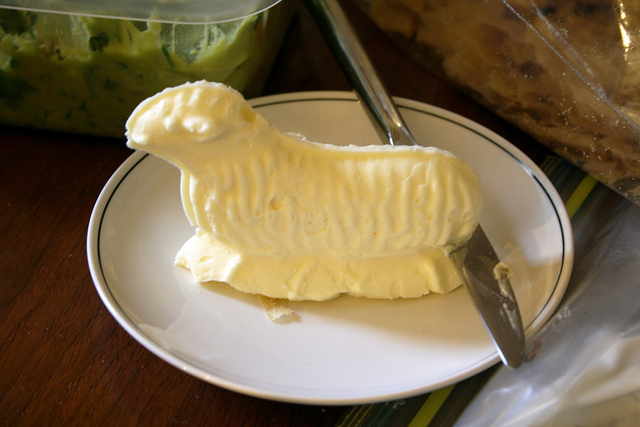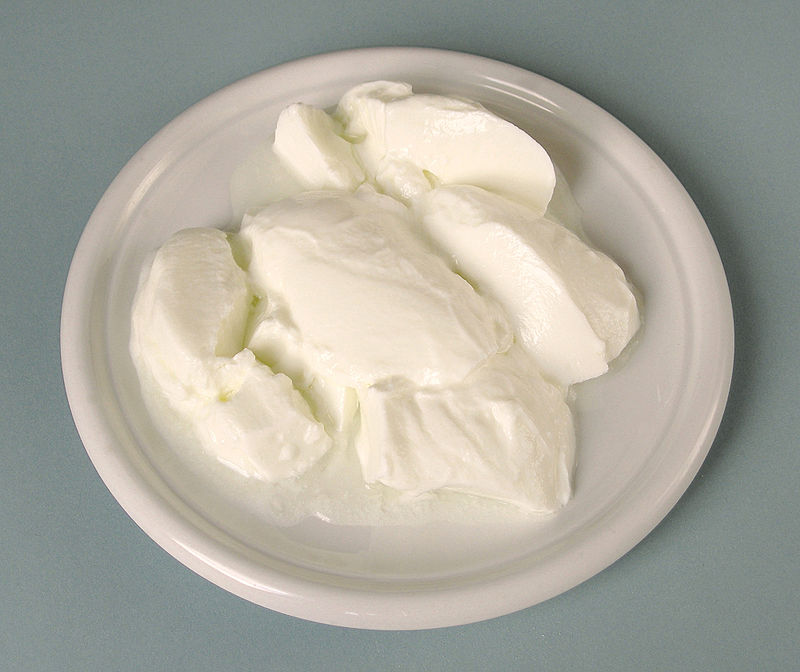Diary Products
In this article we will get to know different diary products.
Butter
Butter is made from the cream that settles on top of the milk after . It is skimmed off and has to rest for some time (at least hours). It is then "buttered" at , i.e. spun or churned. During this process, the fat components of the cream separate from the watery components. The buttermilk is collected and the butter is kneaded into blocks.
Cow's, sheep's and goat's milk are suitable for making butter.

Cheese
To make cheese, the milk is curdled - either by citric acid, acetic acid or lactic acid bacteria (sour milk cheese) or by adding rennet (rennet cheese). The protein components of the milk clump together and the whey is strained off.
This fresh cheese can either be eaten immediately or matured further. To do this, the cheese mass (Dickete) is cut into small pieces with a cheese harp, carefully heated (up to ) and bathed in brine so that more whey can flow out. The cheese mass is then pressed into round sieve moulds. Subsequent bathing in brine ( salt content) removes even more water from the cheese rind.
Finally, the cheese matures for a few days, weeks or months, depending on the variety. During this time, the cheese is turned over and rubbed with salt or herbs. Brine cheese (e.g. feta) matures in a brine.

Yoghurt
Yoghurt is milk thickened by special lactic acid bacteria (yoghurt cultures). The milk is "piped" with the yoghurt cultures and left to stand at suitable temperatures
( depending on the culture) for at least six hours. The resulting natural yoghurt can be refined with sugar, honey and fruits.
